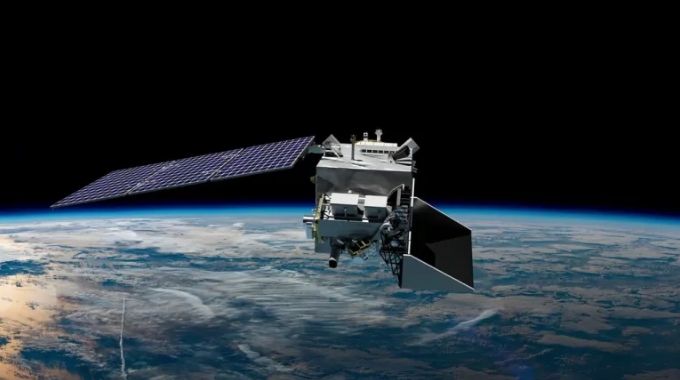The NASA PACE (Plankton, Aerosol, Cloud, ocean Ecosystem) mission uses the Near Space Network of the space agency, and its first transmission showed how this mode of communication helps improve the overall process. Moving forward, PACE will enjoy using the Near Space Network, which will also demonstrate how it could benefit future missions of the agency.
NASA faced massive challenges, particularly disruptions and other forms of delay that are common for space operations.
NASA PACE Shared Data to Earth via Near Space Network

(Photo : NASA)
NASA said that the PACE mission demonstrated its first time to "phone home," starting to deliver operational data for researchers to study the planet. This was through the data-storing technology from the NASA Near Space Network, which was recently given two massive enhancements that PACE demonstrated and is meant to expand communications from future missions.
When received from PACE, the data is encoded and then sent back to Earth via radio waves through the Near Space and Deep Space Networks.
However, these kinds of transmissions can be delayed, but thanks to its DTN (Delay/Disruption Tolerant Networking), it can safely store the data and forward it once it is possible. The Near Space Network can support communications up to 1.2 million miles from the Earth.
PACE is 250 miles above the planet.
Read Also: NASA Abandons Multibillion-Dollar On-Orbit Satellite Servicing Mission
How NASA's Near Space Network Will Improve Missions
DTN is the future of space communications, providing robust protection of data that could be lost due to a disruption
-Kevin Coggins, deputy associate administrator for NASA's Space Communications and Navigation (SCaN) program
Apart from the DTN, NASA's partnership with Kongsberg Satellite Services in Norway brought four new antennas for the network and PACE. PACE can downlink science data 12 to 15 times a day, sending over a total of 2.5 terabytes of data per day.
NASA's Cosmic Communications Development
Communications and network connections are significantly important in space missions, as this ensures that the mission moves forward and continues its operations. Recently, NASA tested the new Deep Space Optical Communications (DSOC) project, which would apply to faraway missions like the Psyche Asteroid mission and the future Mars landing venture.
Instead of radio-based communications, which NASA has long used, it announced last year that it is switching towards a laser-based form of communication, one that it believes would help improve the connections for the ISS. This follows the project that NASA launched in 2021 after the launch of the Laser Communications Relay Demonstration (LCRD).
The PACE mission spacecraft is further away from the Earth, and its distance is certainly a far one that impedes clear and fast transmission. Still, thanks to NASA's technology, delivering daily loads of data is possible. The first operational data from PACE gave the scientists much more information about the planet, with the Near Space Network proving to be a key part of the agency.
Related Article: Voyager 1 Communication Anomalies 15 Billion Miles Away Puzzle NASA Experts






